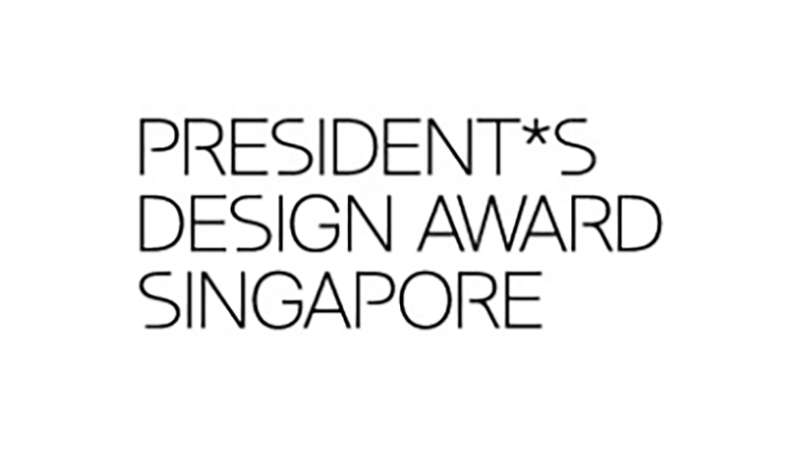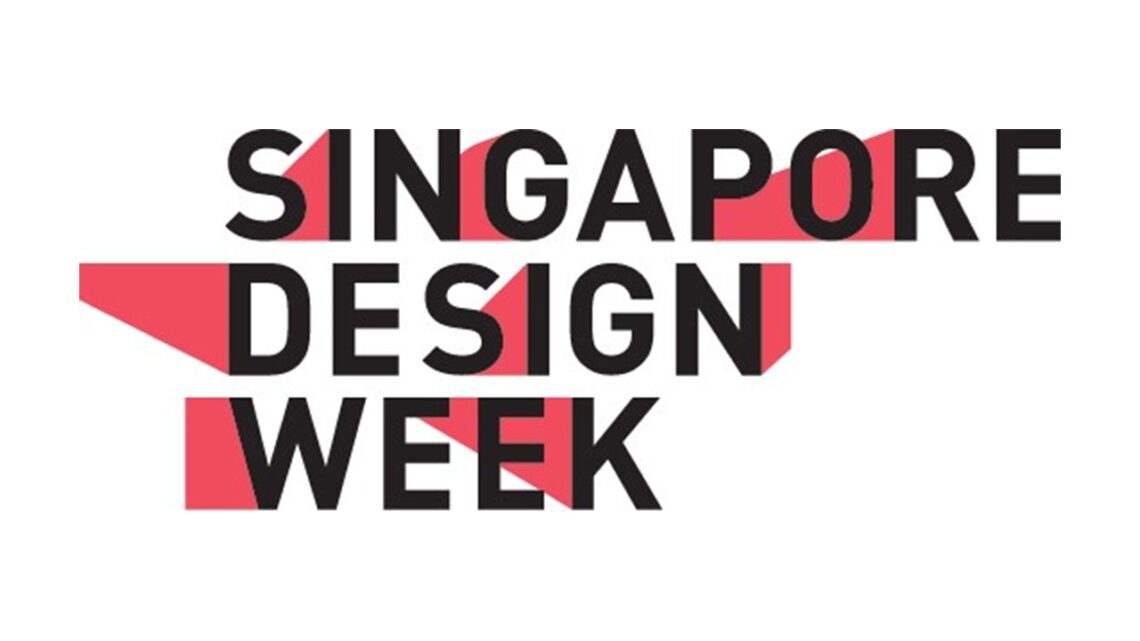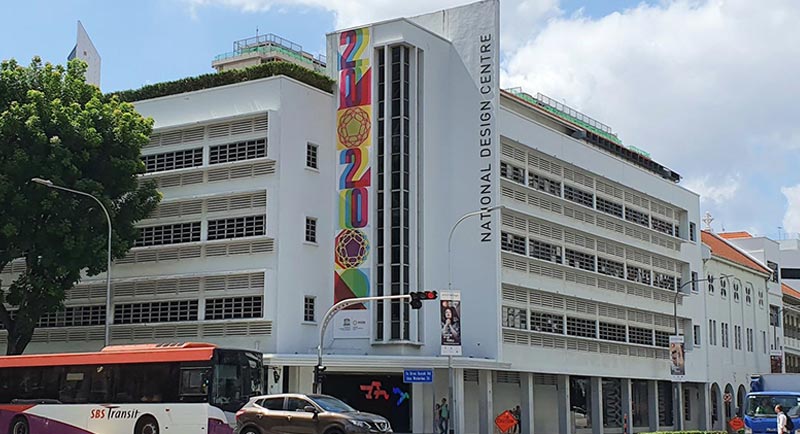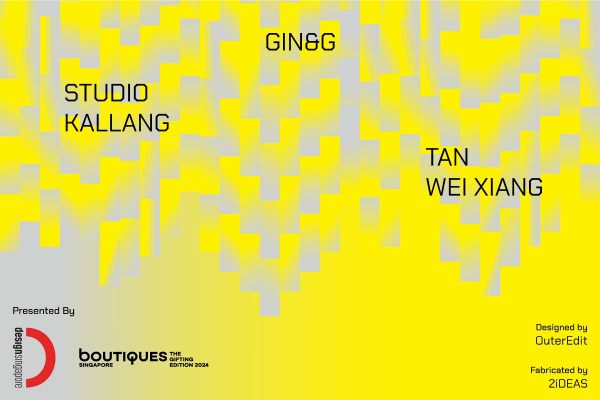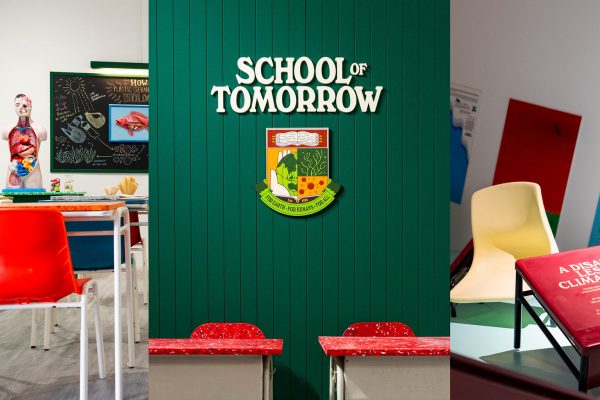Knowing that something is in our best interests is not always a strong enough reason to do it. This human tendency can be seen at Singapore’s network of active ageing centres, where seniors are offered wellness and social programmes. Valuable opportunities for engagement are often missed because of a lack of personal incentive. Designers Rodney Loh and Sim Hao Jie of NextOfKin Creatives had a counter-intuitive idea to boost participation. It turned out to be just the tonic, by tapping on beloved traditions to drive emotional engagement.
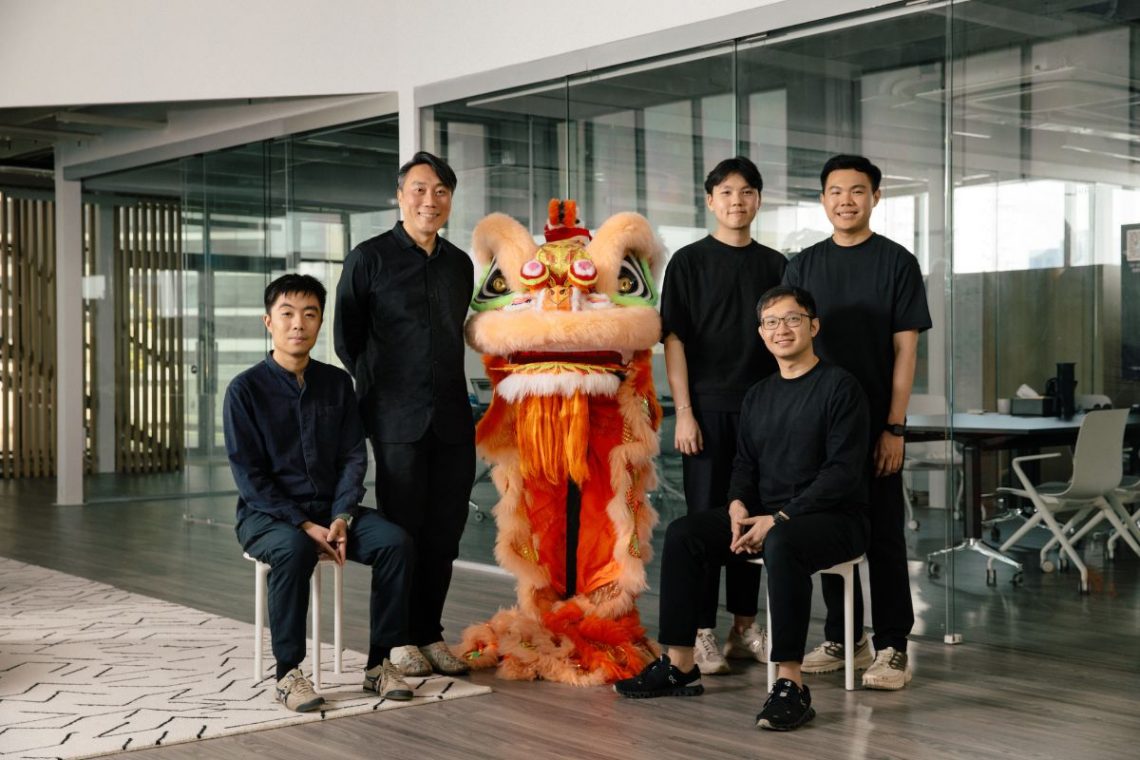
Article by Narelle Yabuka.
How would you respond if you were invited to perform in a lion dance troupe? Would the fascination factor or a sense of nostalgia toward this historic artform translate into a commitment to learning the ropes? Hold that thought and imagine the same proposition in your senior years. Knowing the physical vigour required, would you try it?
It sounds like a wacky idea at first – a recipe for concerned family members and hip replacements. But strategic design studio NextOfKin Creatives could see the potential of lion dance as an activity for seniors if the routine was carefully tailored to the physical capabilities of older people.
The studio collaborated with heritage consultancy Bridging Generations to form Inheritage – a vehicle for investigating the idea with a pilot programme. Drawing on the financial backing of philanthropic organisation the Lien Foundation, which is known for its radical approach to social support, they made Singapore’s first lion dance troupe for seniors a reality.
Why so radical?
It’s not as crazy as it sounds. The Silver Pride Lion Troupe of 23 seniors from the Fei Yue Active Ageing Centre at Holland Close was formed through an imaginative approach to the active ageing programmes that have become fixtures at such centres.
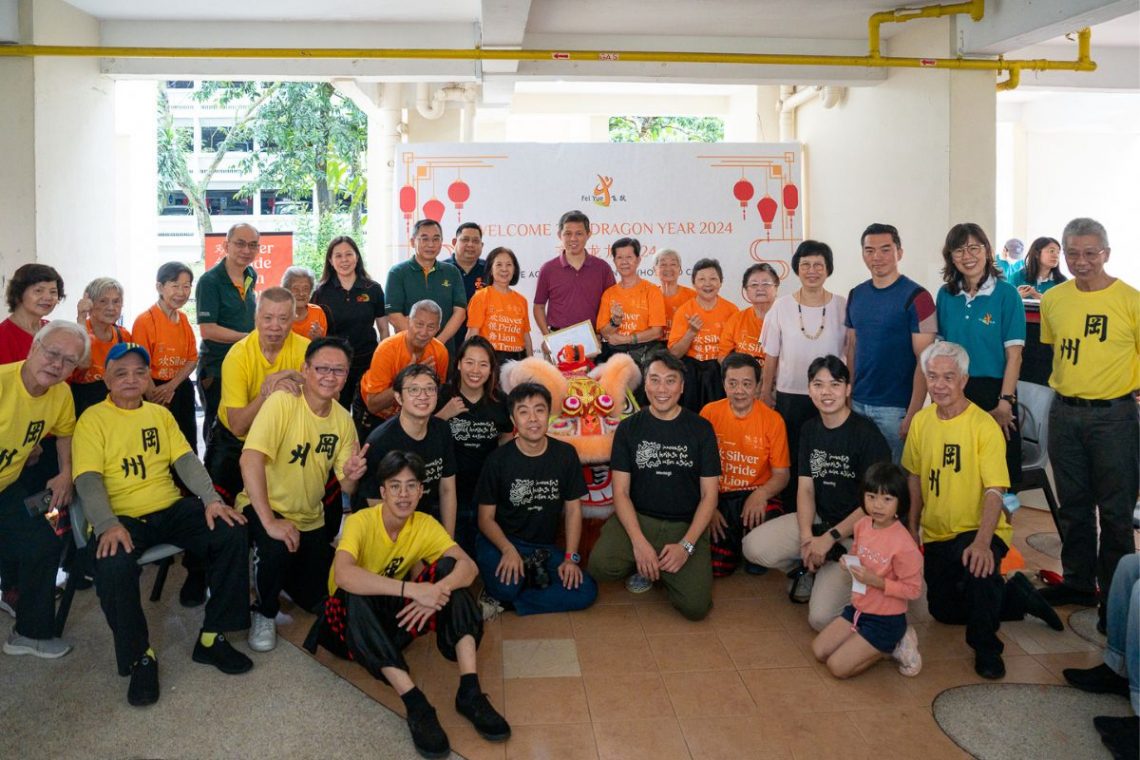
Active ageing centres are a key component of the government’s Age Well SG initiative, which aims to help Singaporeans achieve active, heathy, and socially connected ageing in their homes and communities. The need for active ageing is pressing, with around one in four Singaporeans expected to be 65 years of age and above by 2030.
Typically, active ageing programmes include conventional exercise classes such as low-impact aerobics and chair Zumba, healthy cooking classes, health workshops, and social activities such as board games and karaoke.
The challenge for active ageing centres is that the typical line-up of activities doesn’t appeal to everyone. “Male seniors are a difficult demographic to convert for attendance at active ageing centres because there’s an impression that these are places for aunties to chat and play Rummy-O,” says Sim Hao Jie, Design Manager at NextOfKin Creatives.
“But we had a hypothesis that male seniors would be interested to take part in lion dance, and it was proven right,” he adds. It comes down to interest areas and emotional resonance.
The issue of low rates of male participation was raised in a parliamentary session in 2023. Minister of Health, Mr Ong Ye Kung, noted that men are generally more driven by specific interests when deciding whether to take part in activities at active ageing centres, whereas women may choose to participate for social reasons.
The unconventional choice of lion dance as an activity came after much contemplation by NextOfKin Creatives about the pillars of culture in Singapore – arts, dance, and food heritage among them. Rodney Loh, Design Director at the studio, along with Sim and the rest of the design team, realised that stimulating memories and nostalgia through heritage could activate seniors in a different way. Perhaps, familiar aspects of heritage could be translated into high-appeal active ageing programmes by capitalising on the deep nostalgia that people feel for them.

If you tell people they have to go to the gym, they’ll say, ‘I’m still strong and I don’t want to go.’ But if we tap into memories, we might shift participation from a need to a want.
— Rodney Loh
Designed for all dexterities
A revised lion dance routine, suitable for seniors, was choreographed by Lynn Wong, the Director of Bridging Generations. She is also a member of the lion dance troupe at the 184-year-old Chinese clan Kong Chow Wui Koon, located on New Bridge Road. With clan input, she developed a dance sequence that respects tradition but diverges from it in terms of duration and physical demand.
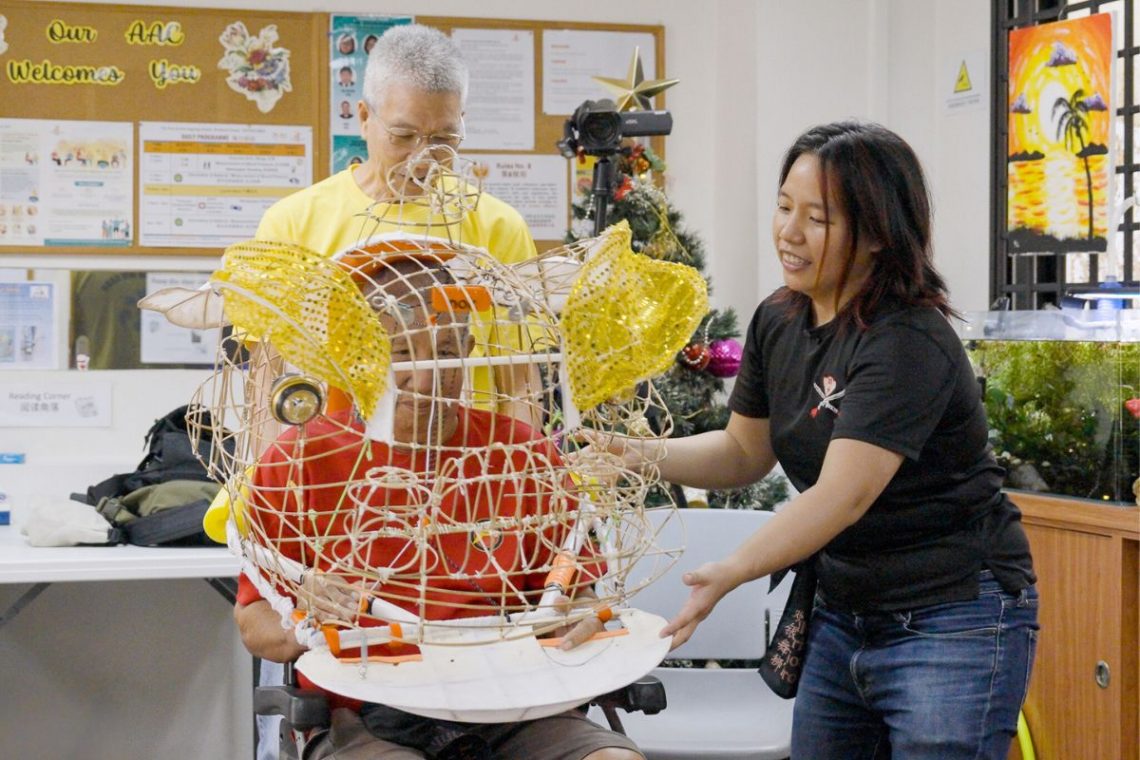
The routine allows the lion head performer to be seated for the prevention of falls. Wong’s training (provided to around 30 seniors from Fei Yue Active Ageing Centre and Yong En Active Hub) thus centred on arm strength and dexterity. She taught a series of chair Zumba exercises using weighted hula hoops and stress balls, and also trained troupe members to play the cymbals.
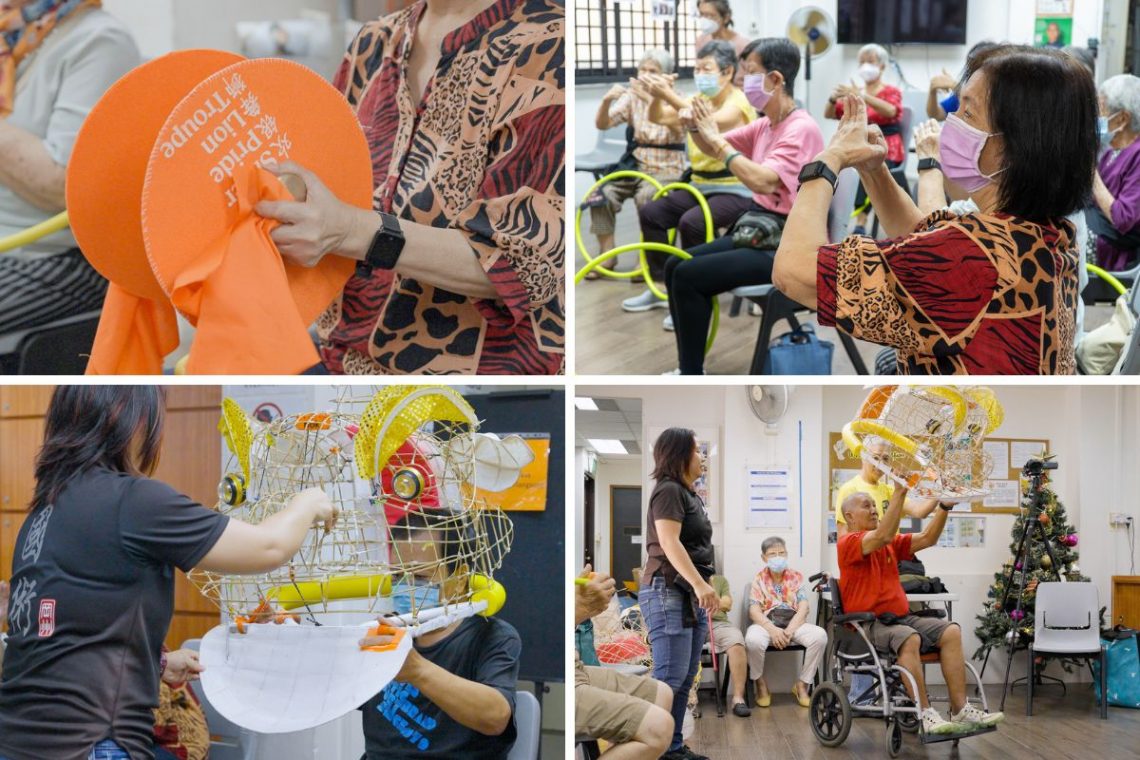

We started with hypotheses that certain interventions could delay ageing: dexterity, stability, and hand and body coordination. But we didn’t talk about that big picture with the seniors. Instead, we broke it down: ‘Today, we’re going to show you this lion head and the trainer will show you these exercises.’
— Rodney Loh
Concurrently, NextOfKin Creatives engaged with seniors during the training sessions to develop modifications to a traditional lion head. It quickly became apparent that such alterations were needed to enable easier handling by the seniors, and to ensure maximum safety with minimal strain.
In its typical format, a lion head has a sturdy aluminium frame at its base, a lightweight bamboo framework forming the shape of the head, a string pulley system to control the blinking of the eyes and the flapping of the ears, and a papier mâché skin.
Based on the seniors’ input, NextOfKin Creatives redesigned the traditional multi-string pulley system with a centralised string system and easy-to-access 3D-printed levers positioned near the aluminium frame. This requires a much shorter range of motion for activation.
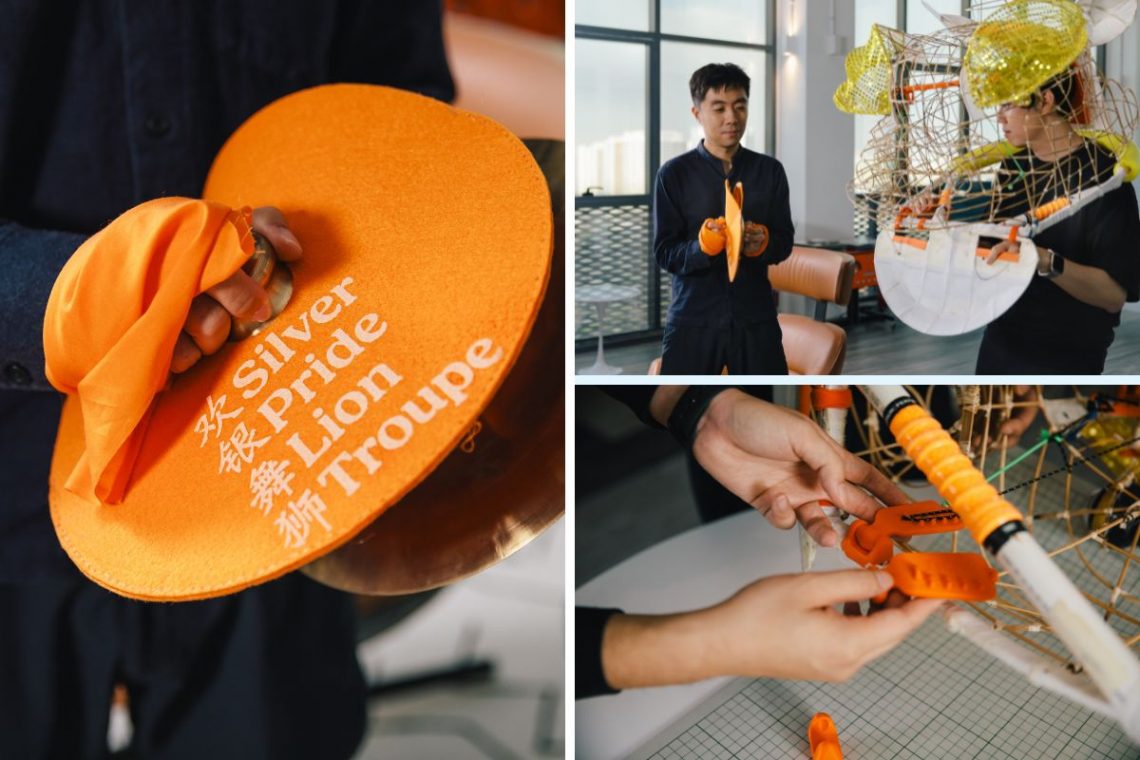
Sponge supports (for shoulder comfort) and rubber grips were also added to the aluminium frame. The traditional paper skin was replaced with a more breathable mesh fabric, which also improved visibility.

At the start, the seniors had doubts about whether they would be able to handle the lion head properly. But by allowing them to test it out and have a say through feedback, we involved them in shaping the design outcomes.
— Sim Hao Jie
The cymbals were also amended with fabric sheaths to dampen the sound – for the benefit of both the seniors using the instruments and their neighbours.
Sim recalls, “Since we had physical prototypes, it was easy for us to observe the seniors. They were comfortable about telling us what did and didn’t work.” He adds, “The design process was no different from what we normally do for commercial projects. You ideate, you test and validate, and you iterate.”

We were ‘designers’ behind the scenes, but on the ground with the seniors we became more like ethnographers and researchers. They could immediately appreciate what we were doing with the 3D-printed components. We just observed and tested our hypotheses.
— Sim Hao Jie
The designers’ input also extended far beyond the process of object adaptation, with strategic thinking about emotional resonance – the very inspiration for the adoption of a heritage-linked activity to begin with.
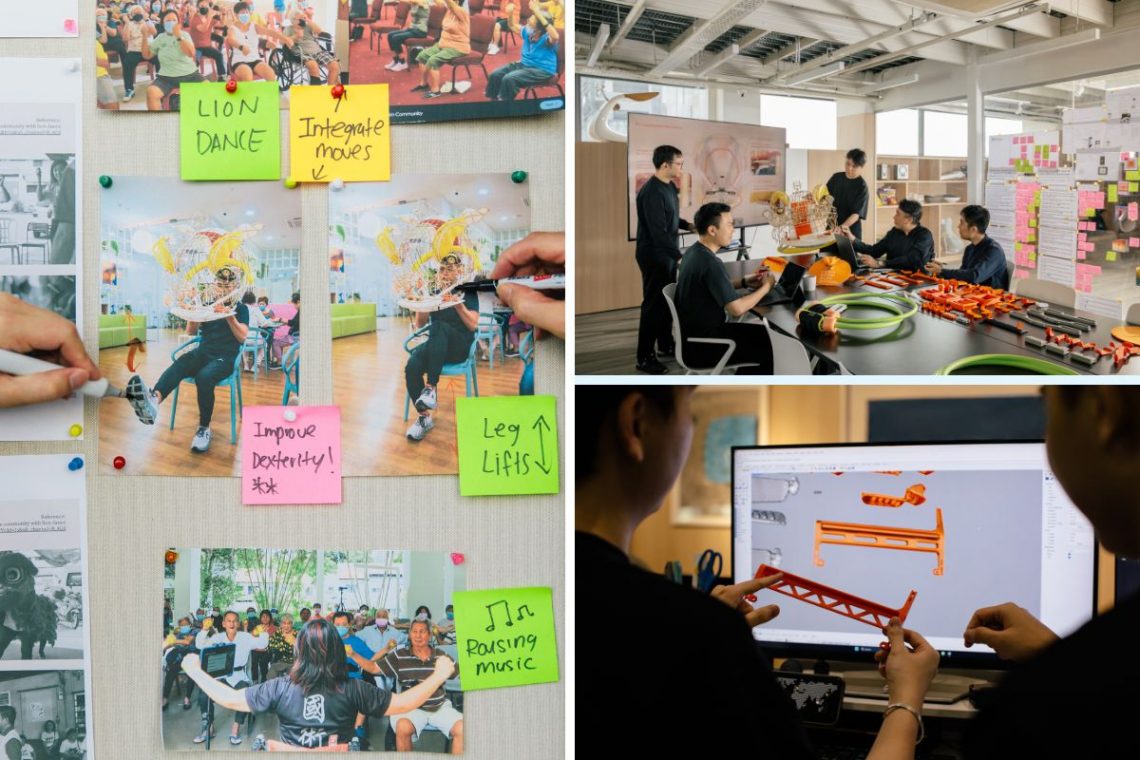
“Morale was important,” says Loh. He continues, “We wanted the seniors to feel that this wasn’t just exercise; there was gravitas and formality in being part of a troupe that would perform for a guest of honour.” NextOfKin Creatives developed a brand via the name Silver Pride Lion Troupe and produced t-shirts and banners.

From memories to action
The Silver Pride Lion Troupe performed for the Minister for Education, Mr Chan Chun Sing, in January 2024 after six weeks of training in the basics of lion dance. No doctors’ visits were required after the Lunar New Year event. In fact, feedback from the participants, who were aged between 63 and 99 years, was positive.
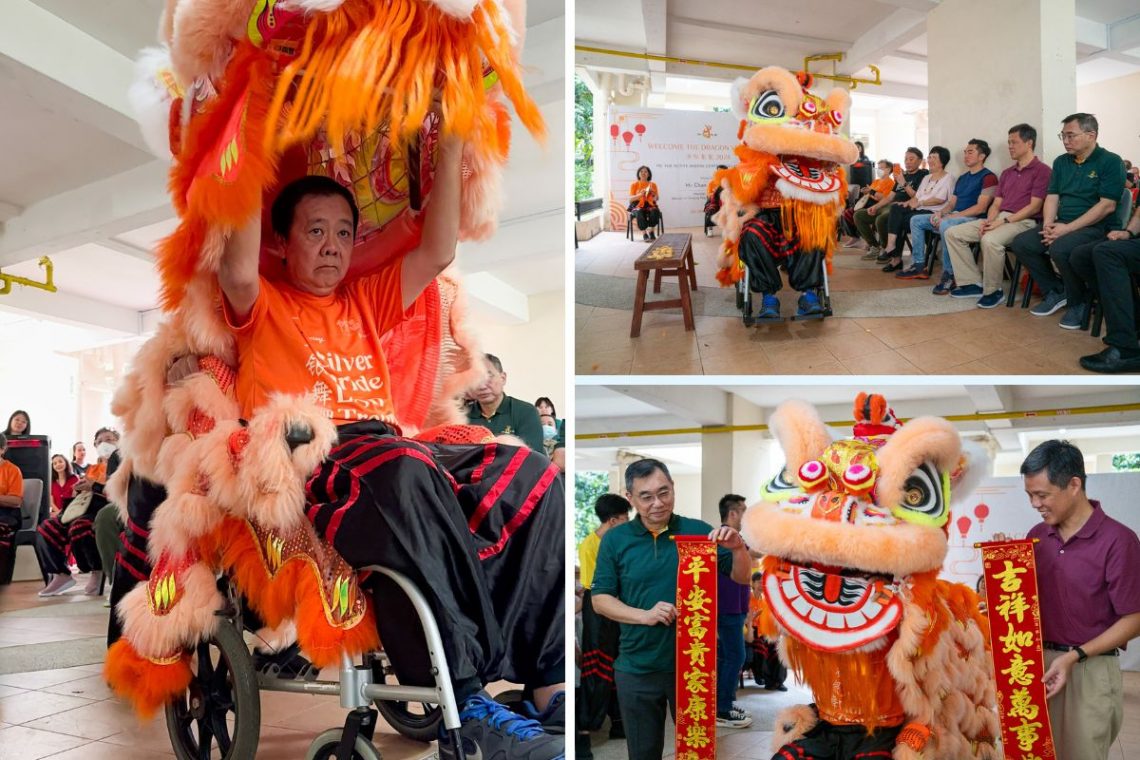
Photos by Rayson Tan, courtesy of NextOfKin Creatives.
Aunty Choo, who performed as a cymbalist, said: “I feel it’s great that being at this age, I can still be part of this programme … It energises us and makes us feel young.” The oldest participant was Grandma Mah, 99, who didn’t miss a training session. She said, “I love listening to the sounds and music of lion dance, so I’m always happy after each class.”
Uncle Tan was one of the dancers who manoeuvred the lion head while seated in a wheelchair – a unique feature of the specially developed Silver Pride routine. He shared:

I have witnessed many lion dances before, but I did not know the meaning behind the movements. Learning lion dance reconnects me with my childhood.
— Uncle Tan
Video footage of the Lunar New Year event shows satisfaction and pride beaming from the face of Uncle Chia, who was a lion dancer during his youth, after he removed the lion head and stood up from the wheelchair at the conclusion of his performance.
Skin in the game
Uncle Chia and Uncle Tan contributed to an important statistic that emerged from the Silver Pride initiative: an uptick in the rate of programme participation by Fei Yue Active Ageing Centre’s male seniors. The lion dance initiative saw the male participation rate almost double to 28%, up from a 17% average in other programmes at the centre.

“It’s always about the right time, the right people, and the right place. This project had all three elements coming together,” says Loh. Serendipity aside, the successful Silver Pride model is one that he and the NextOfKin Creatives team is eager to replicate and develop further with more partners.

As designers, we have this innate urge to improve things. When we see things around us that are not working well, or that could be looked at in a different way, we want to improve them. That’s just how we see things.
— Rodney Loh
“How do we do this on a larger scale? Eventually, we’d love to see lion dance classes become as common as Zumba sessions. That’s our bigger mission,” states Loh. He is already thinking through how the learning sessions might be optimised in future. “Can we gamify the process of learning the instruments? There are plenty of arcade games where you can learn [Japanese] taiko drums. Could we do a version of that for lion dance?” he ponders.
He is cognisant of the costs that would be involved, but he is not letting the challenges deter his courage to forge ahead. “At the very beginning of this journey, Hao Jie and I had a conversation about NextOfKin Creatives having skin in the game,” he describes. “Initiatives like the Silver Pride Lion Troupe are about doing design for good, so we decided we should put aside the potential cost and focus on making it happen,” he adds.
Without action, he feared, there would be an endless conversation about intent, with nothing landing in place. Thanks to the tenacity of the Inheritage team, 23 seniors now have joyful new memories about a beloved tradition, achieved in conjunction with physical activity and social engagement.
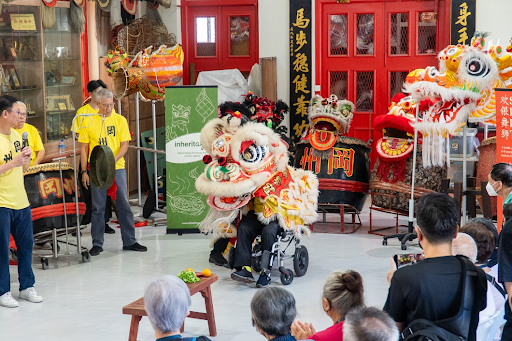

We want to become change makers – to make change for the better. In the long run, all of us will age. So, in a way, we’re just paying it forward.
— Rodney Loh
Do you know someone who harnesses the power of design to improve lives? Nominate them for the “People of Design” initiative for an opportunity to be featured!
